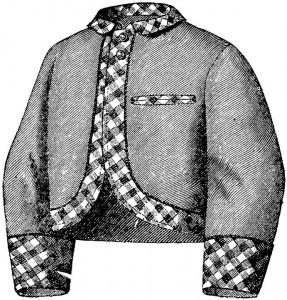
But beyond these fairly common terms, there’s also the less common jargon of the textile industry, which deals with things like types of weave, different tie cuts or shoe manufacturing techniques. I was quite surprised when I discovered that my own knowledge of the topic was derived almost exclusively from English—rather than from my native Spanish. This meant that I had to do some research to confirm that pata de gallo (rooster’s foot) was in fact the Spanish translation of a design pattern which I had always known as “houndstooth.” Through my research I also learned that in other countries the houndstooth pattern is known by its French name, pied-de-poule, and, if Wikipedia is right, the Czechs call it Pepito (whose origins I would love to know).
The flipside of this linguistic situation is that, in turn, most English-speaking fashionistas will often resort to French terms and speak of prêt-à-porter fashion (ready-to-wear clothes) and haute couture (exclusive, trend-setting fashion) or use Spanish terms such as sombrero (a high-crowned, wide-brimmed hat worn in the U.S. Southwest and Mexico) and matador jackets (inspired by the short jackets worn by bullfighters).
To read the original Spanish post go to https://www.trustedtranslations.com/el-lexico-de-la-vestimenta-2012-05-02.html





